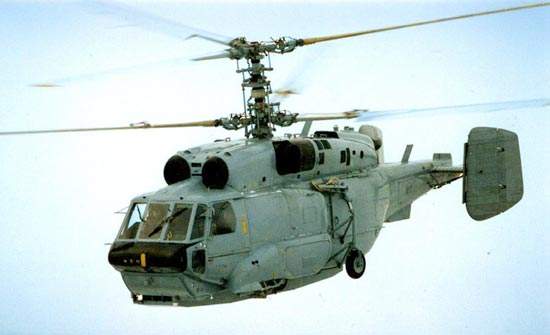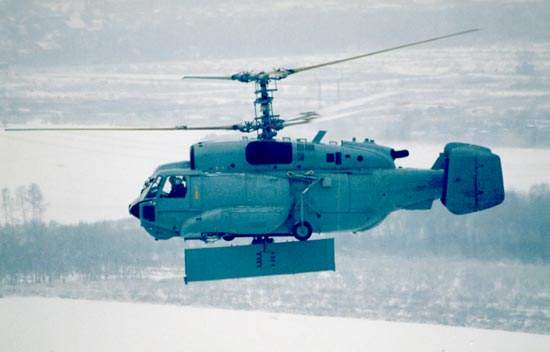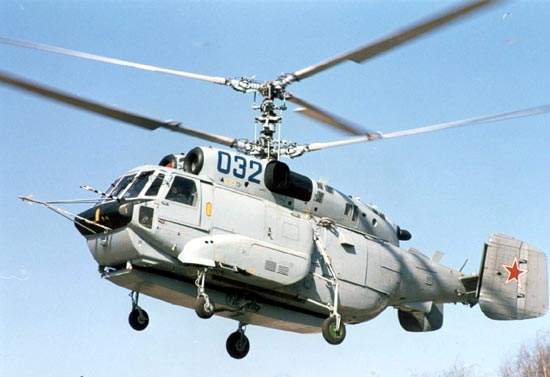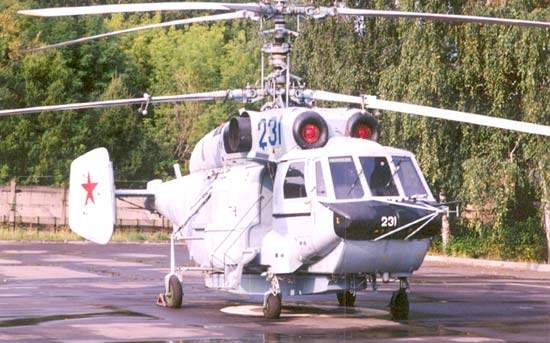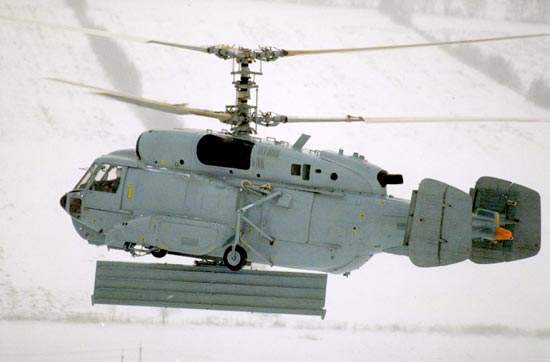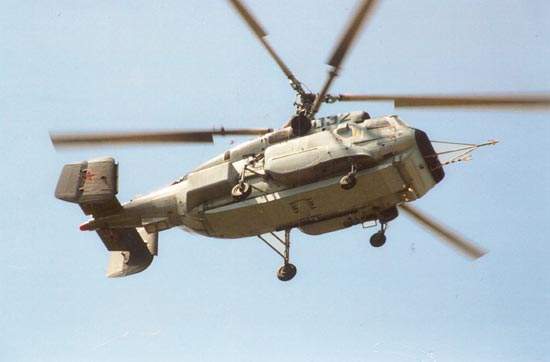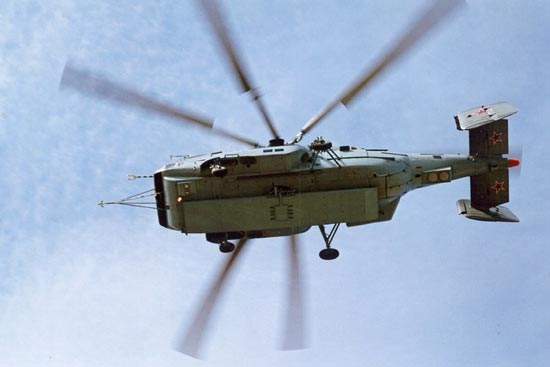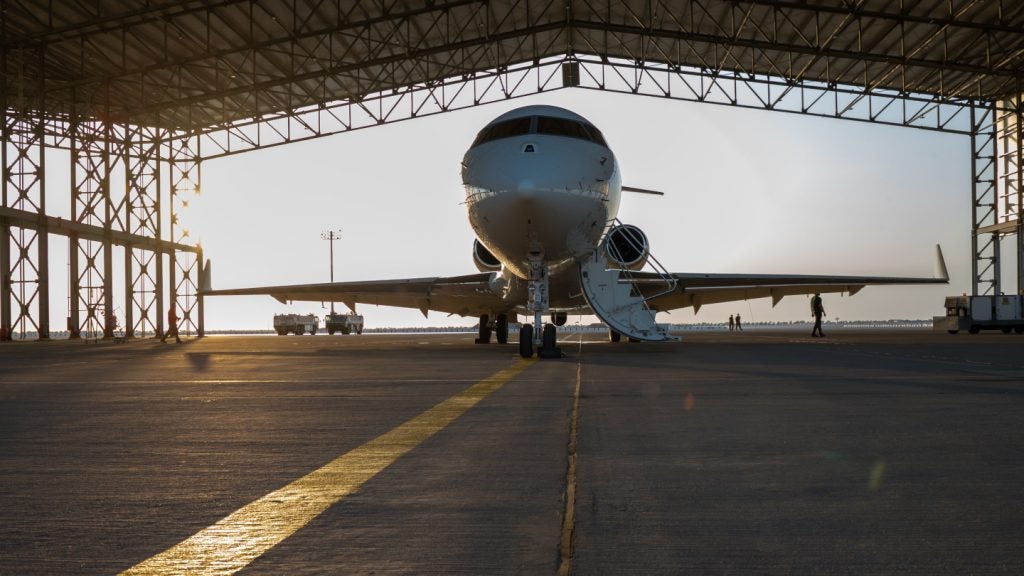Kamov JSC, based in Moscow, began development of the Ka-31 medium-weight naval helicopter in 1980 and the first flight took place in 1987.
The Indian Navy ordered four Ka-31 radar picket Airborne Early Warning (AEW) helicopters in 1999 and a further five in 2001. Full-scale volume production of the helicopter started in 2002. The first batch of four entered service with the Indian Navy in April 2003. The second batch were delivered in 2005.
The helicopters will be deployed from the INS Viraat aircraft carrier, the Admiral Gorshkov carrier, which is being bought from Russia, and three Talwar (Krivak III) Class frigates; it can also be land-based.
The Ka-31 will also operate from the Indian Navy’s indigenous aircraft carrier, which is scheduled to begin construction by the end of 2007.
The main mission of the helicopter is long-range detection of threats, including airborne threats such as fixed-wing aircraft and helicopters. Surveillance, target tracking and transmission of the target data to the command posts is carried out onboard the helicopter. The early provision of hostile target information increases the combat efficiency of naval, air defence and land forces.
KA-31 airborne early warning helicopter design
The Ka-31 naval helicopter, as in all Kamov helicopters except the Ka-60 and 62 family, has co-axially mounted contra-rotating main propellers. The airframe of the Ka-31 is based on the proven and highly successful Ka-27; one visually distinctive feature of the Ka-31 is the large antenna of the early warning radar, which is either rotating or folded and stowed under the fuselage.
The landing gear retracts in order to prevent interference with the radar.
KA-31 cockpit
The flight deck of the Ka-31 naval helicopter is wider than that of the Ka-27 and accommodates two crew, the pilot and the navigator. The cockpit is armour protected.
The navigation suite includes a Kronstadt Kabris 12-channel global positioning system, digital terrain mapping, ground-proximity warning and obstacle approach warning.
E-801M Oko early warning radar
The early warning radar, E-801M Oko (‘Eye’), was developed by the Nizhny Novgorod Radio Engineering Institute. The 6m² radar antenna is stowed flat against the underside of the fuselage until deployed.
The navigator switches on the radar system and the antenna extends, turning through 90° from the horizontal to the vertical plane. In operation the antenna rotates at 6rpm. Once the navigator has switched the radar system to operational mode, the system works autonomously without operator control. The navigator monitors the target observation on a display.
The radar has 360° azimuthal coverage. The surveillance range against a fighter aircraft size target is up to 150km.
The surveillance range against a surface ship is typically 100km to 200km. The radar is capable of simultaneously tracking 40 targets.
When the radar surveillance phase of the mission is completed the antenna is retracted to the storage position. The antenna is fitted with explosive bolts enabling it to be jettisoned quickly in an emergency, such as in preparation for a forced landing.
KA-31 performance
The Ka-31 has a maximum take-off weight of 12,200kg. The operating altitude is up to 3,500m. The helicopter flies on patrol at 100km/h and the operational range with the antennas in the stowed position is 600km. The mission duration is two hours 30 minutes.
Klimov TV3-117VMAR turboshaft engines
The helicopter is powered by two Klimov TV3-117VMAR turboshaft engines, rated at 1,633kW each. The fuel tanks are filled with a fire suppressant low-density polyurethane foam material, which prevents the build up of an explosive fuel and air mix and will also suppress fuel loss in the event of severe combat damage.
Power for the radar and antenna is provided by an auxiliary power unit, type TA-8Ka, installed above the rear section of the engine bay. A flight recorder is installed in the tailcone fairing.

